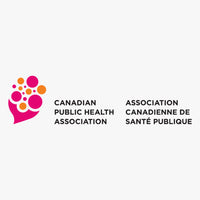Canadian driving laws impacting cannabis users. Do you know the limits?

The government of Canada recently announced that they have selected Drager 5000 as the first device for conducting roadside testing for cannabis and a few other substances. This decision was approved by Attorney General Jody Wilson-Raybould, with a goal to uphold the penalties defined in Bill C-46. This device is to be used by officers after someone is pulled over and there is a suspicion that they may be under the influence of a substance.
So why saliva?
In 2016, the Canadian Society of Forensic Science Journal released a study concerning oral fluids being used to test drivers for substances like cannabis. The saliva test is looking for traces of THC in your saliva which is likely to be there if you’ve smoked within the past 2-3 hours.
However, "The big variable is the THC content – it can range from very little to up to 30 percent, so you really can't do calculations like you can for alcohol," told Andrew Murie, CEO of Mothers Against Drunk Driving (MADD) Canada in an interview with the Globe and Mail last December.
So what are the limits?
For now, it seems like the plan is for officers are to start with a sobriety test and then follow with a saliva test with the Drager 5000. The device looks to see if the user has more than 5 nanograms of THC in their saliva.
It’s important to note that this device can only provide a yes/no result: Yes, the user is above 5 nanograms (ng) or no, they are below 5 ng. “Devices can detect the cannabis component THC at a minuscule 5 ng per millilitre of saliva – just a few minutes after taking the sample.” said Rob Clark Managing Director, Draeger Safety Canada Ltd. in a proposal letter to the Senate Committee on Legal & Constitutional Affairs on March 5, 2018.
What is further confusing the matter is that when the Drager 5000 was criticized for not being accurate the company responded that it is a low threshold (2-4 nanograms) limit that produces the false positives. In Canada, they are looking for higher thresholds said Rob Clark “...we’re measuring at a cut-off of 25 ng/mL of saliva. It makes the test much more robust and much more reliable when you’re measuring for a level like that.”
So does it measure for 5 ng or 25 ng? And what are the actual facts that users should know?
What a Responsible Cannabis User Can Do In The Meantime?
The government has set the tolerance limit to 2 ng or less. This means 2 ng to 5 ng will result in a fine ranging from a $1,000 to 120 days imprisonment (depending on the number of the offenses and how many times the person has been convicted).
The reality is that based on the current Canadian rules on driving while under the influence of cannabis, you should really avoid driving within the first three hours of smoking. While this is a loose way of setting standards, it is the safest measure based on all the information we have gathered so far.
It is important to note that this is for smoking cannabis. The limits, reaction time, and impact of edibles and other forms of cannabis are even more undefined and unknown.












Leave a comment